Uncategorized
Grief and the Holidays (Online, Live)
An opportunity for mindful grief support during the holiday season.
Instructor: Roy Remer
Fully present, in the moment
June 14, 2023 was a day that changed the lives of the Barker family forever.
Anne Barker, who has been married for more than 25 years to the love of her life, Chris Barker, has an incredibly busy life. With six children, theirs is a household filled with happy chaos and constant motion.
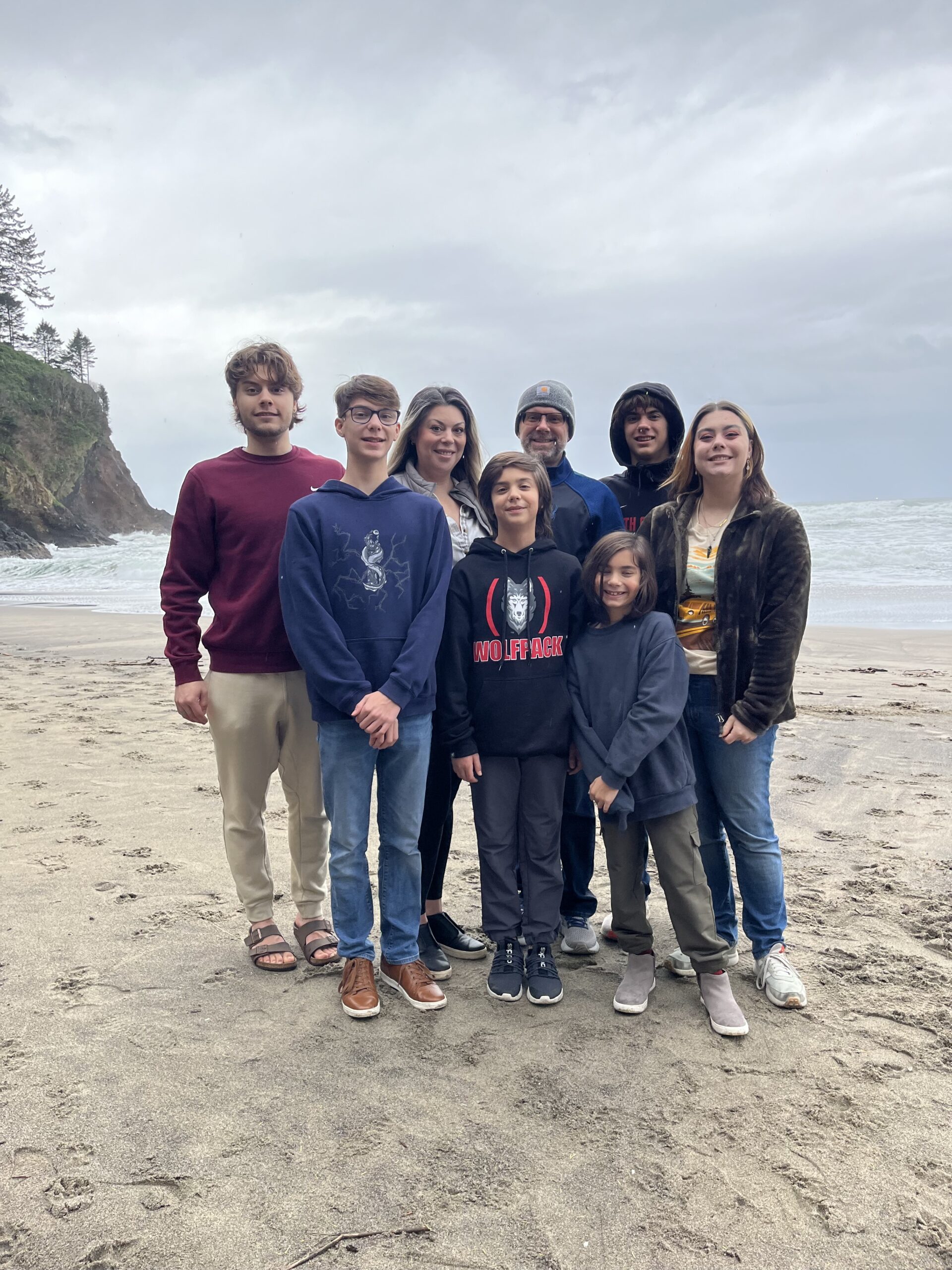
So when Chris, at the age of 51, was unexpectedly diagnosed with stage 4 kidney cancer, the family’s world fell to pieces, and Anne found herself as a full-time caregiver needing to navigate the challenges of caring for Chris and her children, all while continuing to show up for work each day.
In the midst of all of this, Anne felt as if her own self-care was non-existent so someone invited her to take an Essentials of Mindful Caregiving course.
“I was hoping to get some tools to put in my toolbox to be able to use in a moment of crisis,” Anne said. “During a time that was very scary for all of us–I was learning what our future may look like or not look like–this course allowed me to set aside time to focus on just me which was so important. I learned how to care for myself more completely while I continued to care for Chris.”
Because of the generosity of Zen Caregiving Project donors, Anne was given a scholarship to take the course.
“When I think back to the time that I took the course, I have such a feeling of peace. I was losing so much of myself during Chris’ diagnosis that I really looked forward to each week when I was able to commune with other caregivers who were experiencing their own caregiving.”
One of the most important aspects of the course for Anne was that it became a safe place to share her feelings without worry. “Each of us in the course was able to express what we were thinking and feeling as caregivers. It was about us when so much of our worlds were focused on others. It made me feel so much less alone.”
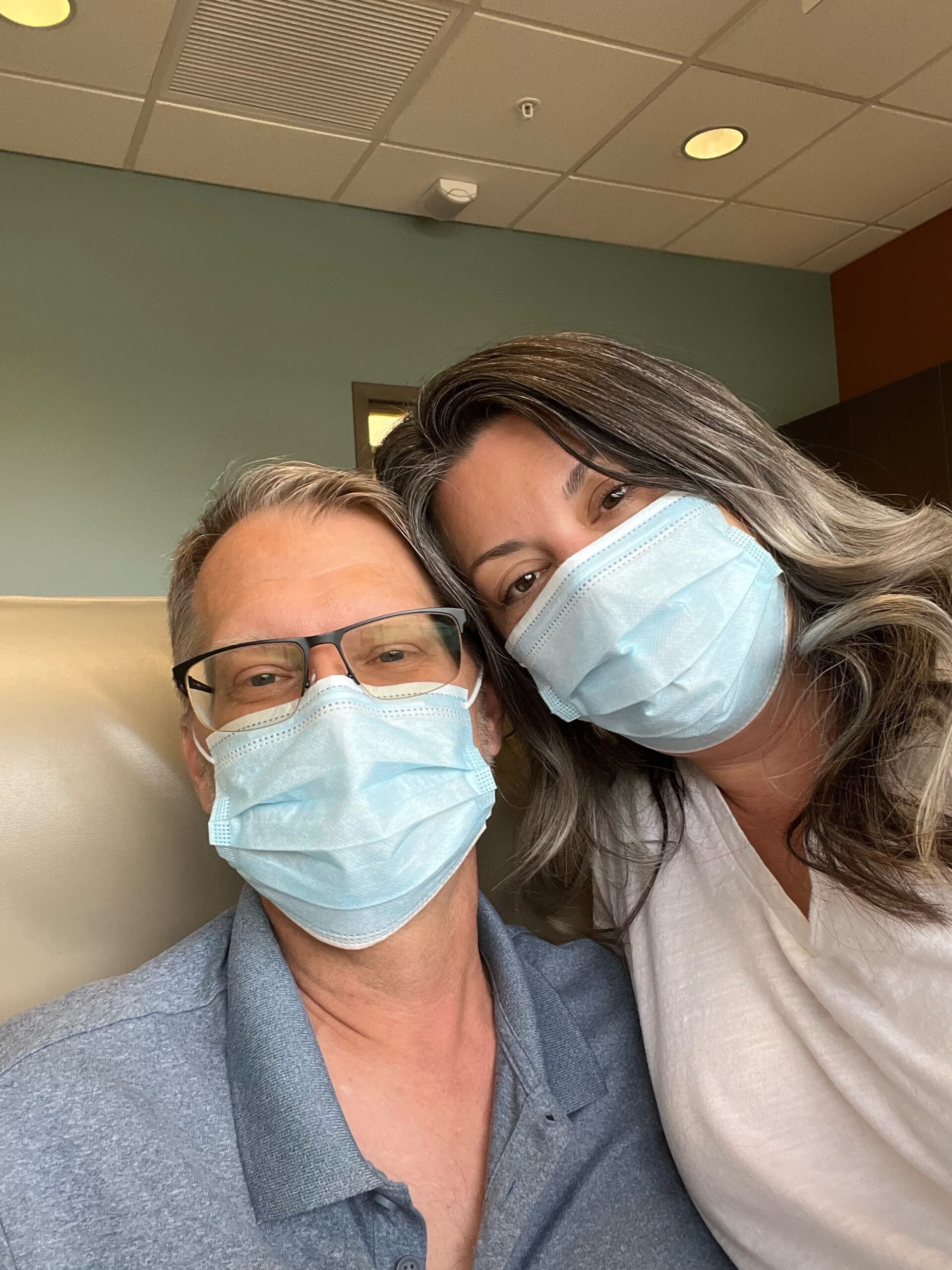
It’s been more than a year since Anne took her eight-hour course, and she now uses some of the tools she learned in the course on a daily basis as her family navigates their new normal of monthly visits to the oncologist, quarterly scans, daily medications, and all of the things that come with a cancer diagnosis.
“I practice mindfulness daily, and I wake up 30 minutes early in order to ground myself. I don’t think I would have done that prior to taking the course, and I find such value in that,” Anne said.
“I take those first minutes each day to remind myself that I am present in this moment, my feet are on the ground, my heart is beating, and I am here. I don’t always know what’s on the other side of those moments so knowing that I can breathe, I can be present, I can put my feet on the ground, is everything.”
As she reflected on the past 15 months, Anne explained that she has always been strong and her strength during this cancer journey doesn’t surprise her. She paused for a moment as her voice caught in her throat.
“Sometimes, I think about those nights that I laid in Chris’ arms and cried. I am still surprised and shocked at how weak I am. Being mindful of my caregiving is what I needed. I give myself permission to be okay with my weakness. It makes me catch my breath and catches me off guard, but that’s okay.”
As a realist, Anne knows what the outlook is for someone with stage 4 cancer. And she has never been afraid of stating the truth.
“I kind of know our ending and that knocks the wind out of my lungs.
“For now, I am fully present, to be mindful, to be here.”
Anne and Chris are both here. And that really is everything.
Caring for Dad
Kristi Jacobson knew what she wanted, she just hadn’t found it yet. As caregiver to her 88 year old father, with whom she has lived since 2011, Kristi knew she was in a unique role that has evolved over the years. “There’s a dance between how to be supportive without being annoying or taking away his power.” That dance flowed pretty naturally until two events in close succession dramatically changed the dynamic. First, her father became the victim of an online scam. It resulted in a big financial loss but most significantly, it was something she knew could have been avoided had she known about it.
“He gave away a lot of money and it made it really clear that had he called me I would have put that to rest within a minute so there was a lot of conversations about (how) we’re a team, we’re a family team and it’s a normal progression for me to start doing some things for him like he’s done for me, and this is more my generation of things – I understand technology a bit better – so about a year and a half ago the real, vigilant care began.”
Still in shock from that experience, the father-daughter team took another blow when just two weeks later her dad got COVID. “He quickly declined,” Kristi described, “his confidence but more significantly his spirit, his sense of “I’m a man in charge of my own life.”
As it is for so many family caregivers, during all this time of caring for her dad through physical, psychological and emotional difficulties, Kristi was also working full time. She felt competent, but also felt clear she needed and wanted support. And also like many other caregivers, Kristi wasn’t used to asking for help.
“I always take care of stuff … so I didn’t know how to ask for help but I know I want guidance and support and I knew I wanted a group and I wanted a path.”
In January 2024, she finally was able to enroll in a Mindful Caregiving Education course. It gave her much of what she sought, but not everything.
“And then I took the course finally. It was what I wanted really really bad and so I was so thankful to get to the group. I found helpful reminders of, you know, taking care of oneself and kind of working with mindfulness while being a caretaker but I still felt a hunger for something more.”
That something more turned out to be the Caregiver Support Circles, a pilot program ready to fully launch in October 2024. Open to all caregivers who have taken our courses, Support Circles are informal gatherings for respite, connection, and discussion. The sessions are lightly facilitated, integrating language and skills presented in the courses. For Kristi, it was the missing piece she’d been seeking. “I was so relieved when the group (support circle) was formed. Those two together – the course and the support circle – were really (raises two thumbs up).”
As Zen Caregiving Project builds capacity to reach more caregivers, we’re thankful for participants like Kristi who take advantage of the benefit of a skill building experience like a Mindful Caregiving Education course, combined with the nourishing reinforcement of Caregiver Support Circles.
Family Caregiver Burnout
When my own mother was diagnosed with stage four pancreatic cancer in January, I thought, “well, at least I have been immersed in grief and loss studies for more than 20 years.” I have run support groups for families who have experienced the death of a child for more than 18 years. My father died when I was a child. One of my daughter’s died at birth. And here I am now, working for an organization that teaches mindful caregiving. I am surrounded by mindful caregivers. So really, how hard can this be? I am grateful to have an understanding employer who supports my need to have a flexible work schedule in order to accommodate the need for me to travel back and forth to care for my mother during this difficult journey.
Can it really be that hard?
Well, it likely won’t come as a surprise that it is indeed excruciatingly hard, especially for a person who excels at pouring myself into helping others. I excel at giving 150% of everything I have to everyone else. And so what this really and truly means is that I am terrible at giving 100% to myself in times of need.
I have had to shift my thinking dramatically, and I have had to set some of my own guideposts. One question I am thinking about is this: What accommodations do I need to make in order to care for myself so that I can better care for someone else? I recognize that my strength is in caring for others, but my weakness is in caring for myself. I’ve started my own personal list, and I’d love for you to reach out to me and tell me how you continue to care for yourself if this is a struggle for you as well.
Here is my own personal list:
Add reminders to my phone using timers to tell me to take five minutes to breathe. Before I get out of bed in the morning, envision the boxes in my brain and peek inside: If it’s a work day today, take a moment to look inside my mental health box: acknowledge the anxiety I feel about the changes in my mom’s eating and pain level, and then close up the box until the end of the day when I can peek inside again.
Send a text to my mom who lives in a different state: How did you sleep last night? Wait for her response; read it; then tuck it away until evening when I can text her again.
Stay hydrated! Fill up my water bottle so I can drink water all day. Refill it as needed. Practice, practice, practice breathing. Remind myself it’s a practice not a destination. Keep practicing.
Join me in starting your own list. And send me a note to tell me what’s on yours. –Sarah
A day in the life of a family caregiver
6:37 a.m.
A light scratching against the door and the morning light coming through the edges of the shades awoke me before my alarm had the chance to go off. You don’t get fed until 7:30 a.m., I mumbled to the cat as she continued to mew. It was Wednesday morning, the last day of classes for my graduating senior.
I grabbed my phone to see if there were any messages from the east coast where some of my family live. Silent. Whew, I thought. No emergencies overnight.
I jumped out of bed, ran into the laundry room to start a load of laundry, pushed the coffee maker button, and opened the fridge to see what I might find to make my son for breakfast on his last day of school.
The morning routine is pretty, well, routine:
Feed the cats.
Feed the dogs.
Feed the kid.
Give the animals fresh water.
Toss a load of laundry into the dryer and a load into the washer.
Walk the dogs.
Kiss my husband goodbye as he leaves for work.
Text my mom who just enrolled in hospice to see if she slept well and how her pain was on a scale of 0 to 10. A two. Great, I wrote back. The daily pain meds should bring that back down to a zero in an hour or so. I’ll check back in a bit later today.
Pour coffee.
Get a glass of water.
Time for a real breakfast or just grab a protein bar? I check my watch.
Several meetings at work today mean less time to meet some deadlines so I head into my home office a bit earlier.
Get a text from my son at school. Did you buy me a yearbook?
Yes, I respond.
They don’t have a record of it, he writes back.
Go ahead and buy one, and I’ll Venmo you the money later, I reply.
The day goes on like this. If I’m lucky, I get to step away long enough to take the dogs for a quick mid-afternoon walk around the neighborhood. In my head, I’m balancing work, my aging mother’s care, my son’s needs, and even the needs of the aging neighbors around me. Occasionally, when I go out to get my mail or pull in my garbage cans, my neighbor will ask for IT support. She’s in her 70s and often wants to communicate with her daughter in England but struggles sometimes with how to do that.
I am a caregiver. My oldest will turn 27 when my youngest goes off to college in the fall. For 27 years there has been someone in my house to take care of. And now, my mother needs more care so I find myself flying up and down the west coast more often. I am a family caregiver. And I am a lucky caregiver because I have the advantage of working from home, taking a moment during the day to respond to the needs of my mother–the hospice nurse may call; the social worker calls sometimes; my mother
calls.
My needs get set aside. Often I am the last one to stop to care for myself. The dog walks, in many ways, are self-care. I can breathe fresh air, I can take a moment to regroup my thoughts. But even then, I’m caring for the pets. The real needs for my own self-care get pushed to the side so often I pause and ask myself: If I were watching me from afar, what would I tell myself?
Stop.
Pause.
Feel the water over my hands as I wash them.
Notice the soap as I hold it in my palm, the lavender pieces acting as a loofah.
Rinse.
Breathe.
Step back into work.
Place everything else into a container in my head and close it up for now.
Find gratitude for who I am and what I do.
I am a family caregiver.
I too need care and nurturing.
How am I feeling?
Notice the feeling.
Acknowledge the feeling.
Thank the feeling.
Breathe.
Begin where I am. Take one breath, and I will go from there
Boundaries.
Boundaries–It’s a word filled with lots of expectations and hopes–especially when one thinks about it within the context of caregiving. It is easy to understand the boundary of a property line–a fence, a sidewalk, or even a gate. It is, however, much more difficult to understand and navigate emotional boundaries surrounding caregiving.
Brené Brown, social science researcher and professor, defines them in this way: “boundaries are a prerequisite for compassion and empathy. We can’t connect with someone unless we’re clear about where we end and they begin. If there’s no autonomy between people, then there’s no compassion or empathy, just enmeshment.”
It’s the perfect definition for caregivers and for the work that we do at Zen Caregiving Project. In order to have compassion and empathy, one must define their own boundaries. While this is always easier said than done, we offer a few tools to make sure that you honor your own boundaries.
“Using the S.T.O.P. practice, we encourage caregivers to Stop or pause when they notice someone has crossed an emotional boundary. Then, Take a breath and notice where emotions are being expressed in the body. Observe and consider what just happened. And finally, once you’ve taken a moment to do those three things, Proceed in a skillful way that does not make a tense situation worse.”
Managing healthy boundaries in a caregiving relationship can be difficult and uncomfortable. Please remember, whatever you do, however you respond, be kind to yourself.
When a ZCP Staff Member Finds Herself in the Role of Family Caregiver
The recent call came on a Sunday night around 11:00 pm from my mother’s cell phone. Except it wasn’t my mother on the other end–it was a friend of hers.
“Hi, Sarah, this is Pat, and I’m in the ER with your mom, and it’s not good.”
Six hours later I was on a flight to Orange County, California where my mother lives. Within 12 hours of that call, I was in the hospital room with her when the doctor came in to tell us, “It’s stage four cancer that has spread to several places.”
The next several days in the hospital are honestly a blur – oncologists, urologists, palliative care, “ovarian cancer,” “no, possibly, uterine cancer,” “no, likely pancreatic cancer.” Pain medication, more tests, more doctors, PAs, nurses, and on and on and on.
Three weeks beyond that phone call, and I could finally take a breath, for a moment, to think about how I went from getting ready on a Sunday evening for a week of work and my son’s school activities, to finding myself as a caregiver for my aging mother and talking each evening to my family over Zoom from 1,200 miles away.
So this is what they mean by Sandwich Caregiving, I thought to myself as I responded to work emails late into the night and emailed my book club to let them know I’d be out of town for an extended period of time and would step away for the time being from attending (or hosting) book club.
One phone call. Twelve hours. 1,200 miles. And everything in my life (and my mother’s!) had been turned upside down.
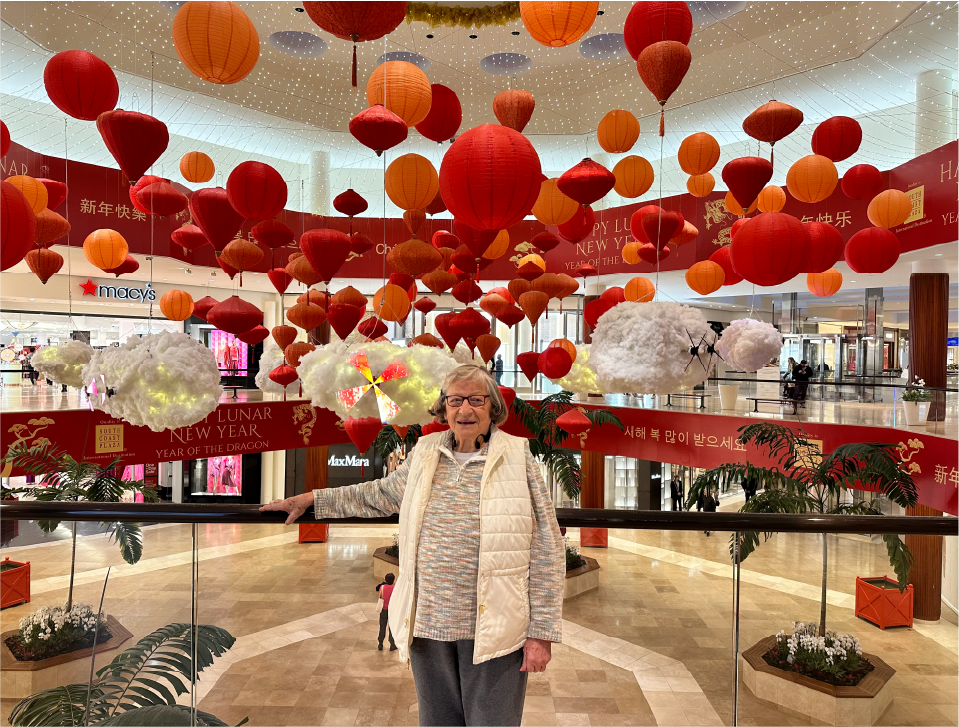
By week four as we began to settle into our “new normal,” I began to remember what I had learned in the first Essentials of Mindful Caregiving course I took shortly after joining Zen Caregiving Project.
Pause for just a moment in the doorway.
Take a breath.
Feel the water over my hands as I wash them in between caregiving duties.
Breathe in.
Breathe out.
Focus on my breath.
The S.T.O.P. Practice
Stop.
Take a breath.
Observe my environment.
Proceed with my activity.

I have an emotional toolkit, I reminded myself as I put a variety of pills into my mom’s new four times a day pill organizer.
Over and over again for the past two months, I am reminded of the value of these courses that we teach. I am also reminded how important it is to remind the caregiver to practice self-care.
After I tucked my mom into bed at about 8:30 pm during my fourth week, I was reminded of my own need for self-care as I went into the kitchen to get a glass of water and instead sat down at the table for a moment and promptly fell asleep for more than an hour waking up with an imprint of my mom’s placemat on my cheek.
The dishes can wait, I whispered to myself as I crawled into bed to sleep a few hours before the alarm went off to give my mom her 2 a.m. medication.
Breathe in.
Breathe out.
Tomorrow, I thought, tomorrow, I’ll practice being as kind to myself as I have been to my mother. I can do at least this much.
Heidi Hartsough’s journey from the Peace Corps to ZCP Volunteer
Heidi Hartsough lights up a room when she steps into it. Her smile, even when talking about grief and loss, is ever present, and when she talks about her volunteer work with Zen Caregiving Project (ZCP), an easiness and lightness appear. In many ways, Heidi has been called to ZCP as a volunteer at Laguna Honda Hospital where she offers her presence five hours a week sitting with residents and families.
As a registered nurse at UCSF Medical Center, Heidi understands what happens in the medical system as a patient, but her roles as an RN and a volunteer are vastly different.
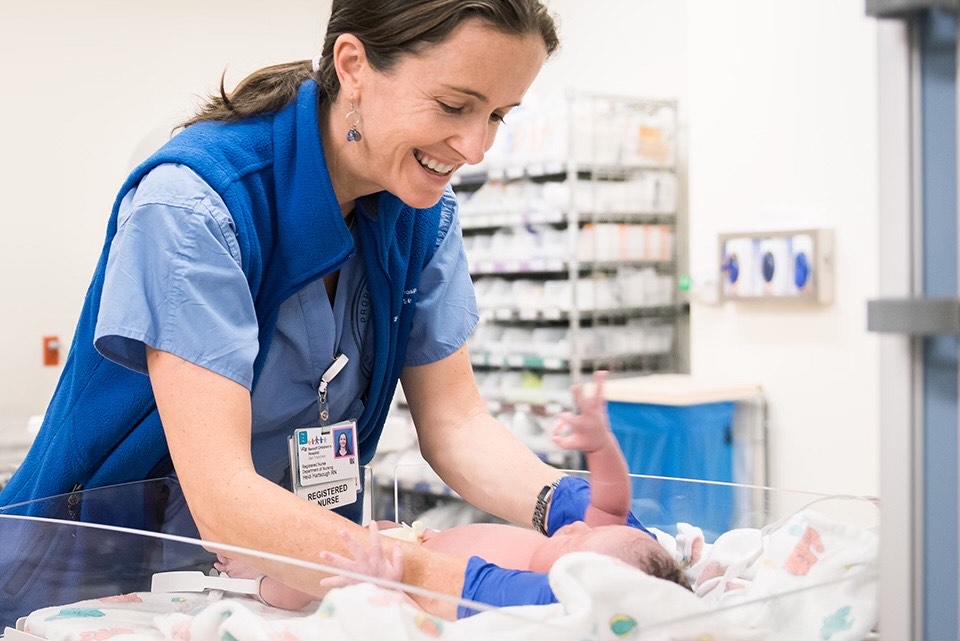
“When I start my 13-hour shift at the hospital, I just jump in, doing, doing, doing, and there is no check-in or space to just be. My job is doing all the time.”
“At ZCP it’s simply about being. I love when I put on my lanyard that says Volunteer, and I can enter a room and offer my presence. These experiences complement one another, and I have grown from being a nurse and a volunteer,” Heidi continues.
Her journey to ZCP started at a young age with parents who instilled in her the value of giving back to her community. The daughter of Quaker parents, Heidi grew up in San Francisco.
“I know that my childhood and how I was raised were hugely influenced by service. My parents saw everyone as equal, and I learned early that a person should show up to be all that they can be,” she explained.
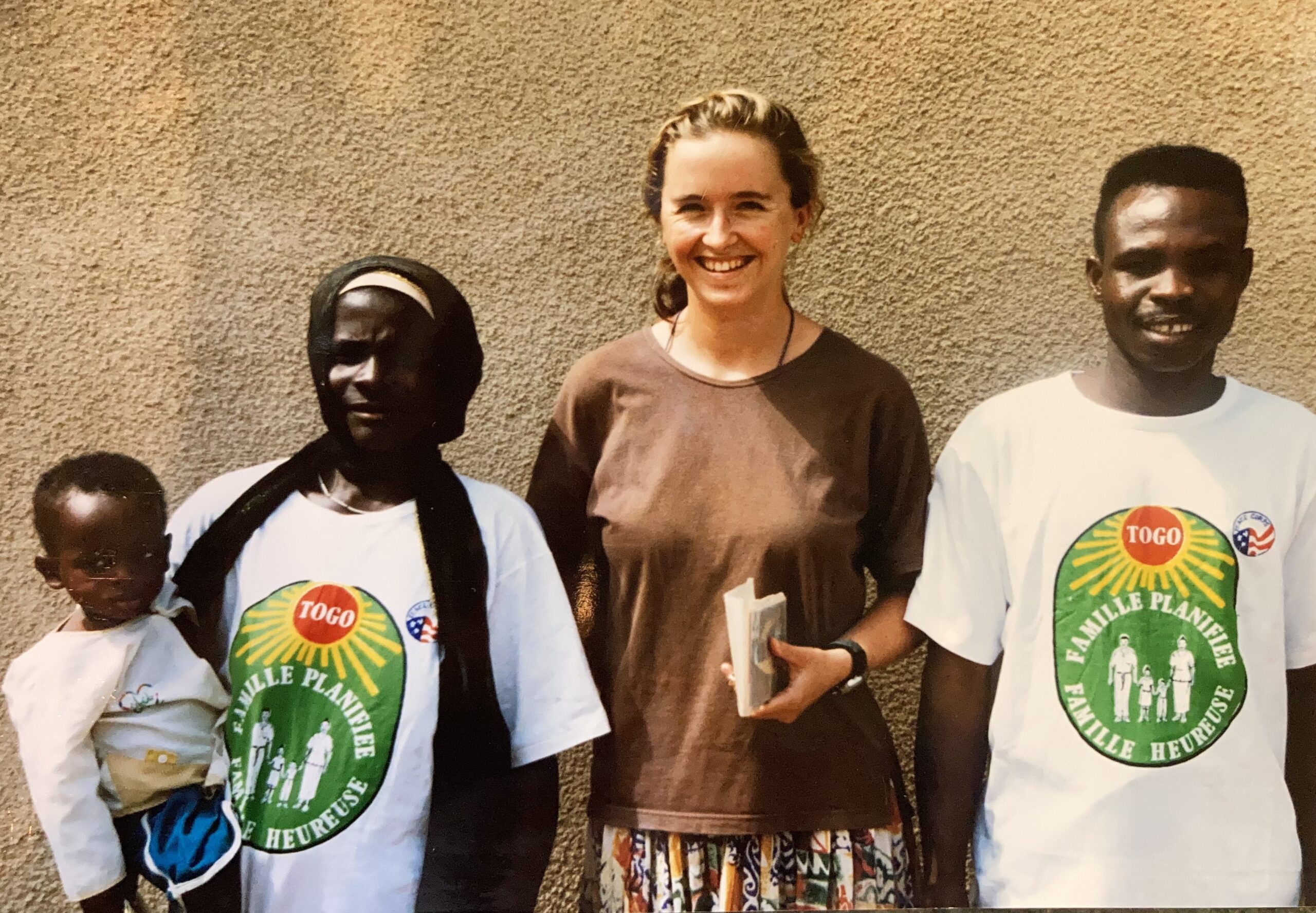
Indeed, Heidi showed up early for service when she followed in her mother’s footsteps and joined the Peace Corps after studying public health in college. She spent three and a half years in Kouloumi, Togo in Western Africa, a small village located between Ghana and Nigeria. It was there, living with a midwife and working with the villagers, that she felt called to be a nurse with a focus on women and maternal health.
“The traditional way in which death and birth were held in Togo and how death was so accepted as a part of existence made a huge impression on me. We don’t talk about stillbirth, neonatal loss, or infant birth in America,” she explained.
In Africa, when asked the question, “ ‘How many children do you have?’ The answer was always followed by, “Oh, I have eight children and three are living.”
That was an answer she’d never heard before in America. “The traditional way in which death and birth were held and how death was so accepted as a part of existence made a huge impression on me,” she said.
Like many professionals with children, Heidi began to find a few extra hours available each week as her children grew older. She knew she wanted to do meaningful volunteer work, and that’s how she came across the Zen Caregiving Project.
“My parents were getting older, and I wanted to explore how I could gain more experience and knowledge as a mother and a daughter,” she said. “It felt amazingly natural as a labor and delivery nurse and my desire for service to volunteer with an organization like ZCP.”
At Laguna Honda Hospital (LHH) in their palliative care ward, Heidi was struck by the fact that we are all just human beings sitting together with stories to tell.
“To be in community with one another, to be in the presence of someone else even when we don’t communicate, is powerful,” she explained. “We are meant to practice loving kindness with one another, and this work has made me a much more grounded person and keen to sit with curiosity and patience to see what unfolds in everyday interactions.”
“As volunteers, we are present at our most vulnerable with those who are at their most vulnerable; we should not shy away from that,” she continues.
Heidi surprised herself early on after leaving her volunteer shift at LHH. “Each time I left my shift at Laguna Honda, I felt energized and connected even when someone had just died. The way death was framed in my Peace Corps days influenced this,” she said.
“We need to talk about death more often,” Heidi said. And at Zen Caregiving Project that’s exactly what she does.
On the wall behind Heidi, there is a painting of four blue hands with white dots on them. They appear to be hands raised as if waiting their turn to be next. “Come Heidi, sit with me. Be with me,” the art suggests.
May we all be fortunate enough to have a Heidi by our side when our time comes.
If you like what you read, please join us and enroll in one of our courses, share our work with someone you think will benefit from it, or support us through a donation.
Collaboration in Action: ZCP Volunteers and Curry Senior Center
The streets of San Francisco’s Tenderloin district can appear to be a cacophony of poverty and human suffering: crowded, dirty streets, the occasional smell of urine and feces, a barefoot person huddled on the sidewalk, their meager belongings strewn about them, tents, open drug use. For some, with nowhere else to go, the street is their home; they live their lives in public.
For others, who inhabit small, cramped rooms in single room occupancy hotels—SROs—the street may be their living room, a meeting place, a hang out, a social center, the hub of their social life.
On a crowded block of Eddy Street, across from the Tenderloin Police Station, stands San Francisco Historical Building #176, home of the Cadillac Hotel.
For the past year, Zen Caregiving Project (ZCP) volunteers have been going to the Cadillac every Friday to provide emotional and social support for the residents living there. The intention is to be able to provide palliative support for residents who are ill and wish to die at home in their room. The first step, however, is getting to know the residents, gaining their trust, and becoming familiar with the culture of the hotel.
Our work is a collaboration between Zen Caregiving Project and Curry Senior Services, which has been providing a variety of wellness programs at the Cadillac for the past five years.
The resident population is diverse. Of the 150 rooms, 75% of the population is over the age of 55, 43% are Spanish speaking. Some work regular jobs and go out every day and some rarely leave their rooms. Some are disabled, some show no physical indication of poor health but bear the scars of trauma, addiction, and mental health struggles. And they all have stories, colorful, astounding, heartbreaking stories. ZCP volunteers listen; we are witnesses to whatever the residents want to share about themselves, their lives.
One of our volunteer caregivers, John Ungvarsky said, “We’ve been able to connect with many of the residents at the Cadillac Hotel and provide a presence for them. Just by being present and being able to listen to them, we are building relationships.” At Zen Caregiving Project we embrace the notion of the mutuality of service, so that witnessing and companioning become a mutual process that serves the needs of both residents and volunteers.
A Volunteer Caregiver at the Cadillac Hotel Finds Meaning in the Tenderloin
John Ungvarsky is a thoughtful, contemplative environmental scientist who retired from the Environmental Protection Agency in August 2022, and in October 2022 he began his training at Zen Caregiving Project to become a volunteer caregiver at the Cadillac Hotel in the Tenderloin.
“Anybody who has spent time in San Francisco is aware of the Tenderloin,” John said. “It doesn’t have a good reputation. It’s not the kind of place where people want to spend a lot of time. It’s in the news about fentanyl deaths, homelessness, and more.”
While John knew he wanted to serve in the capacity as a volunteer caregiver, he wasn’t sure what to expect at the Cadillac Hotel. But John also knew that there was a great need to serve there because of all of the people who are suffering, and he was open to seeing how his service would unfold.
John spends up to five hours a week at the Cadillac Hotel meeting with residents, listening to their stories and finding ways to connect with them.
In 2006, John was present with his mother when she died, and in 2016, he found himself sitting with his brother, an alcoholic, as he passed away. He discovered in both situations that being present with them as they died were some of the most powerful moments in his life. So he knew, when he retired, he’d want to find ways to sit with others in times of need.
At the Cadillac Hotel, there are elderly sick people but also a great number of middle-aged and young people. Many of the residents have been affected by poverty, homelessness, drugs, alcohol, and/or mental illness and have a desire to stay off of the streets.
They’ve been through some very difficult periods of their life that have led them to live there. They are isolated, and some don’t get out much. They feel safer being in the Cadillac.
At first, John explained, the residents wondered what the volunteers wanted from them. They were certain that there must be some kind of transactional relationship. But given time and consistent presence, John explained that they have been very successful at building trust.
“We are welcomed each Friday, and we are having a very positive impact on the residents,” he said. “It is a gift because it is teaching me so much about myself. We are touching their lives and they are touching ours.”
John acknowledges that it has been a surprise for him at how comfortable he feels being around the residents.
“Zen Caregiving Project offers us an opportunity to connect with people in need, and the most important quality for us as caregivers is being vulnerable with the residents, and in turn, they can be vulnerable with us.”

